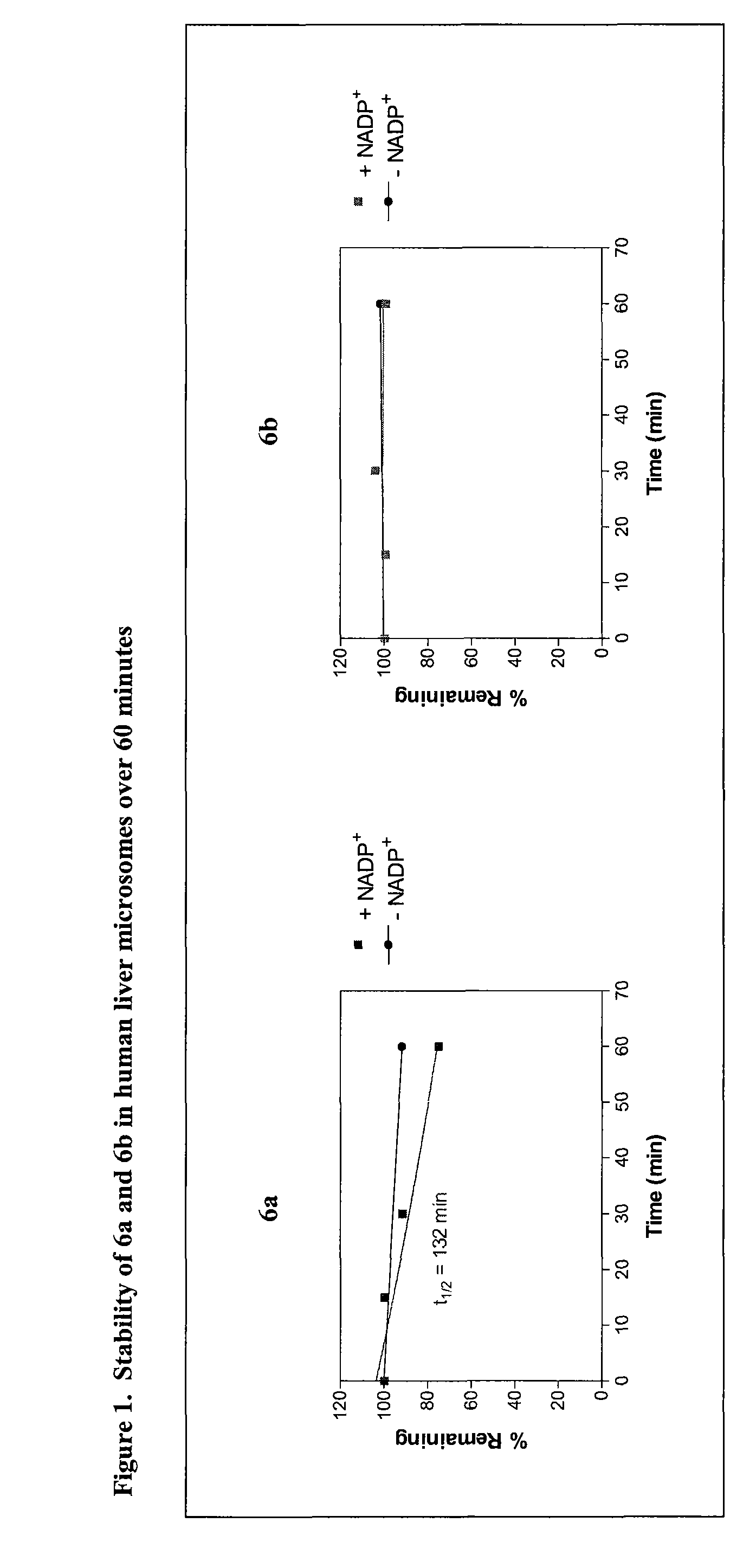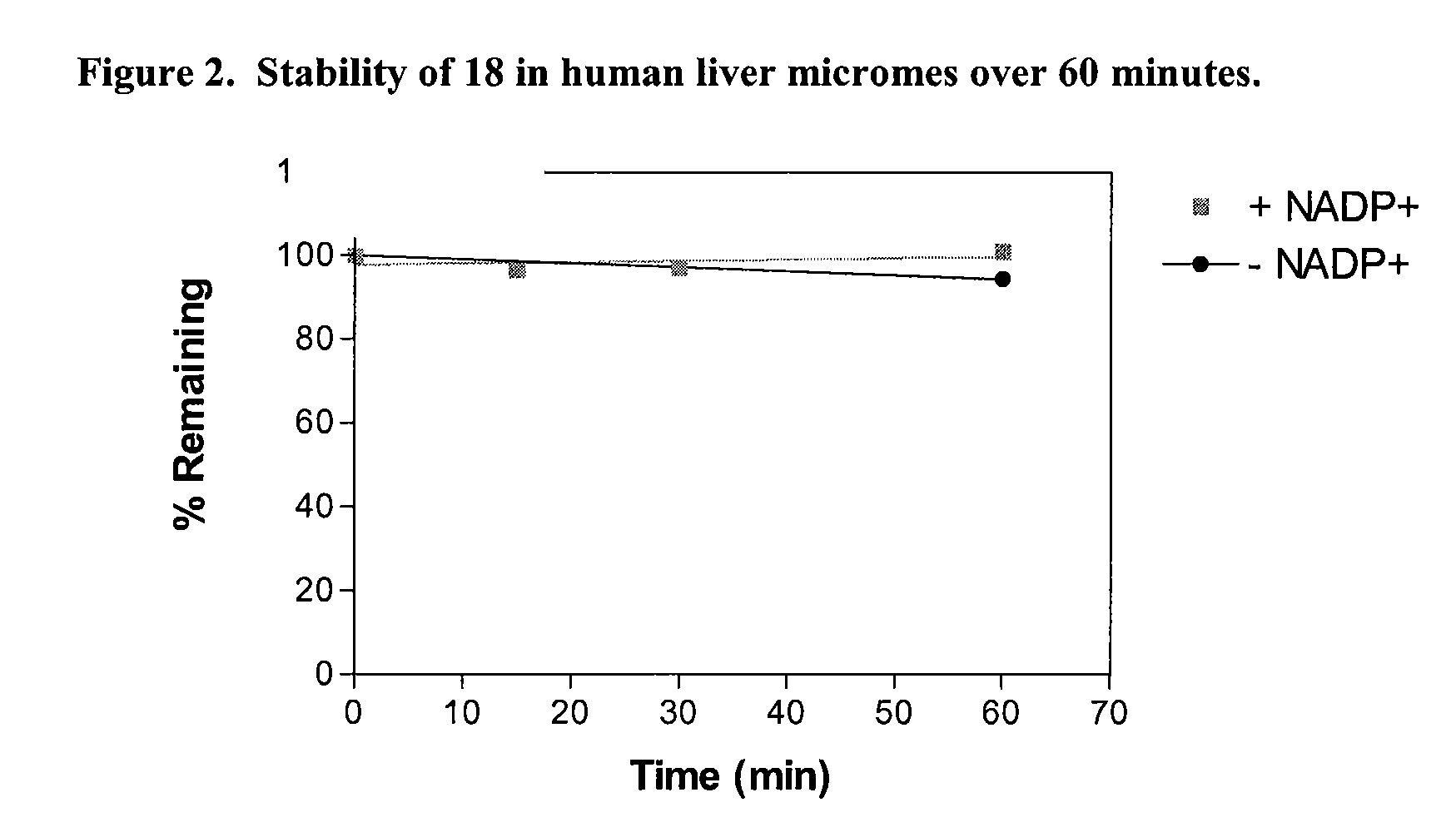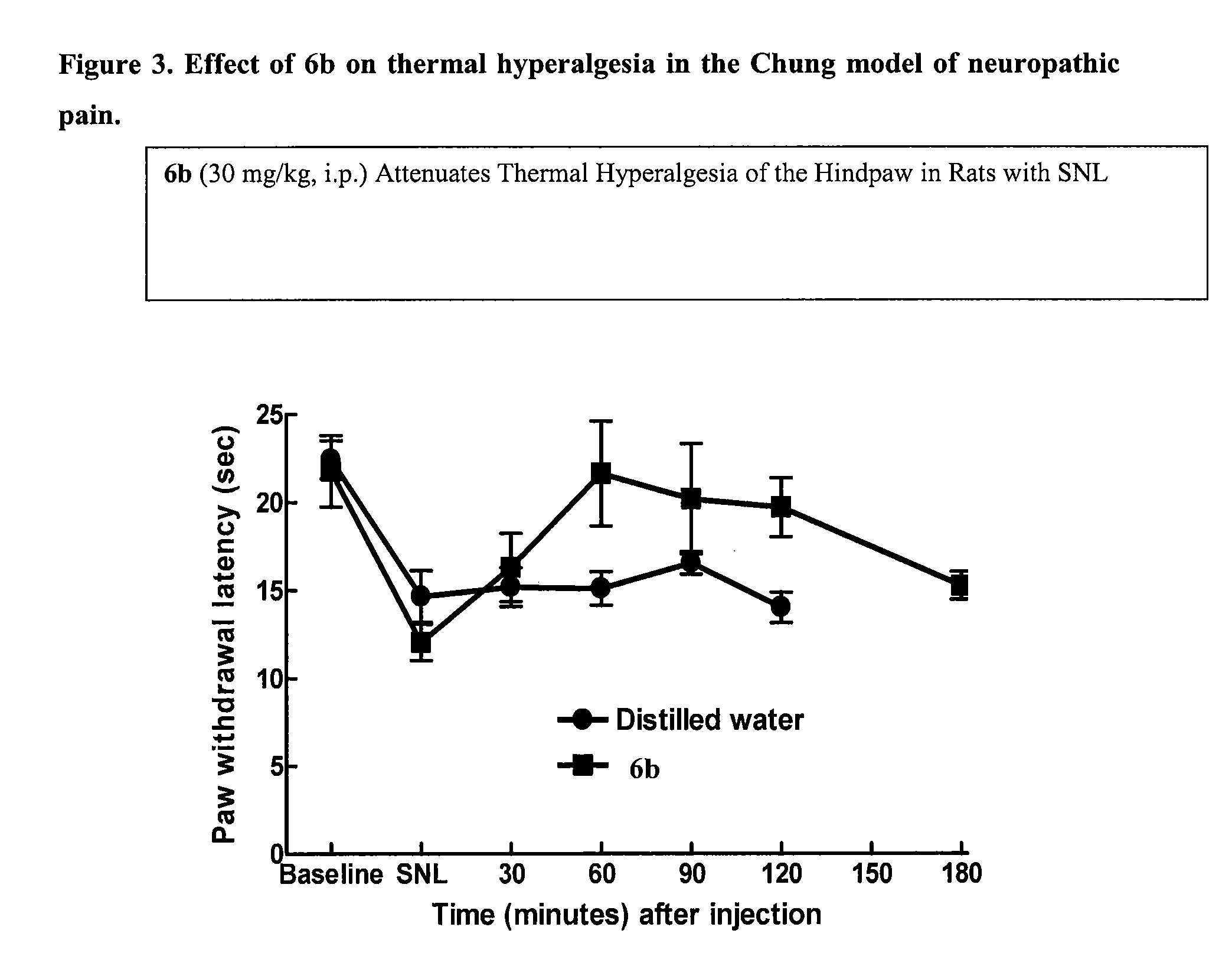Indole compounds and methods for treating visceral pain
a technology of indole compounds and visceral pain, which is applied in the direction of biocide, drug composition, cardiovascular disorder, etc., can solve the problem of one of the most difficult forms of pain to trea
- Summary
- Abstract
- Description
- Claims
- Application Information
AI Technical Summary
Benefits of technology
Problems solved by technology
Method used
Image
Examples
example 1
N-(3-(1-Methylpyrrolidin-3-yl)-1H-indol-5-yl)thiophene-2-carboximidamide (6a and 6b)
[0209]
(a) N-Benzyl-3-(1-methylpyrrolidin-3-yl)-1H-indol-5-anine (1)
[0210]Macor, J. E et. al J. Med. Chem., 37, 2509-2512, (1994).
(b) 5-Bromo-3-(1-methylpyrrolidin-3-yl)-1H-indol-5-amine (2)
[0211]Macor, J. E et al Synthesis, (1997), 443-449.
(c) 3-(1-Methylpyrrolidin-3-yl)-1H-indol-5-amine (3)
[0212]Method (1): N-benzyl-3-(1-methylpyrrolidin-3-yl)-1H-indol-5-amine 1, (4.0 g, 13.097 mmol) was dissolved in anhydrous ethanol (60 mL) in a dry argon purged flask. Palladium hydroxide, 20 wt % on carbon, wet (1.92 g, 2.734 mmol) is quickly added and the atmosphere from the flask evacuated by vacuum pump and replaced with hydrogen from a balloon. The atmosphere is evacuated from the flask and replaced with hydrogen twice more and the mixture stirred under a hydrogen atmosphere at room temperature. After 48 hours, the mixture is filtered through a pad of celite to remove insolubles, the pad washed with anhydrous...
example 2
Attempted resolution of N-benzyl-3-(1-methylpyrrolidin-3-yl)-1H-indol-5-amine (1)
[0239]
General Procedure:
[0240]N-Benzyl-3-(1-methylpyrrolidin-3-yl)-1H-indol-5-amine 1, (1.0 g, 3.274 mmol) was dissolved in an anhydrous solvent (˜10 mL) in a dry argon purged flask. To this solution was added a solution of chiral acid (0.5 equiv.) in anhydrous solvent (˜10 mL) with swirling. If an immediate cloudiness appeared in the solution, further anhydrous solvent was added slowly with heating until the mixture was homogeneous. The mixture was allowed to cool slowly. If a viscous gum precipitated on the walls of the flask, further anhydrous solvent was added with heating until homogenous, and the solution allowed to cool to RT. Where no precipitation was observed at RT the flask was cooled to 0° C. overnight, and / or an antisolvent was added to try to induce crystallization. Results are summarized in Table 3 below.
[0241]
TABLE 3Attempted resolution of N-benzyl-3-(1-methylpyrrolidin-3-yl)-1H-indol-5-...
example 3
Attempted resolution of N-(3-(1-methylpyrrolidin-3-yl)-1H-indol-5-yl)thiophene-2-carboximidamide (6)
[0242]
General Procedure:
[0243]N-(3-(1-methylpyrrolidin-3-yl)-1H-indol-5-yl)thiophene-2-carboximidamide 6, (0.78 g, 2.404 mmol) was dissolved in an anhydrous solvent (˜10 mL) in a dry argon purged flask. To this solution was added a solution of chiral acid (0.5 equiv.) in anhydrous solvent (˜10 mL) with swirling. If an immediate cloudiness appeared in the solution, further anhydrous solvent was added slowly with heating until the mixture was homogeneous. The mixture was allowed to cool slowly. If a viscous gum precipitated on the walls of the flask, further anhydrous solvent was added with heating until homogenous, and the solution allowed to cool to RT. Where no precipitation was observed at room temperature the flask was cooled to 0° C. overnight to try to induce crystallization. Results are summarized in Table 4 below.
[0244]
TABLE 4Attempted resolution of N-(3-(1-methylpyrrolidin-3-y...
PUM
 Login to View More
Login to View More Abstract
Description
Claims
Application Information
 Login to View More
Login to View More - R&D
- Intellectual Property
- Life Sciences
- Materials
- Tech Scout
- Unparalleled Data Quality
- Higher Quality Content
- 60% Fewer Hallucinations
Browse by: Latest US Patents, China's latest patents, Technical Efficacy Thesaurus, Application Domain, Technology Topic, Popular Technical Reports.
© 2025 PatSnap. All rights reserved.Legal|Privacy policy|Modern Slavery Act Transparency Statement|Sitemap|About US| Contact US: help@patsnap.com



